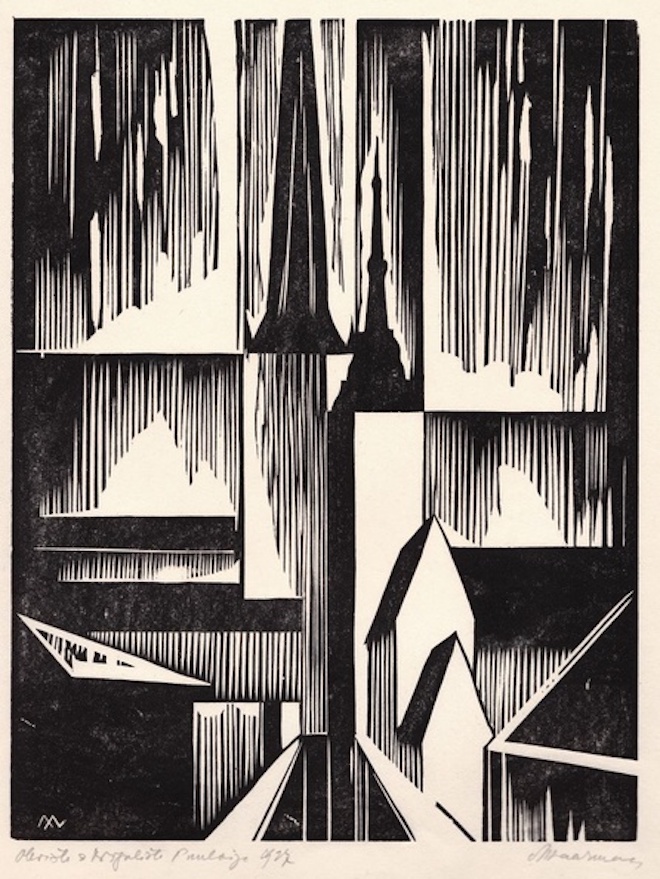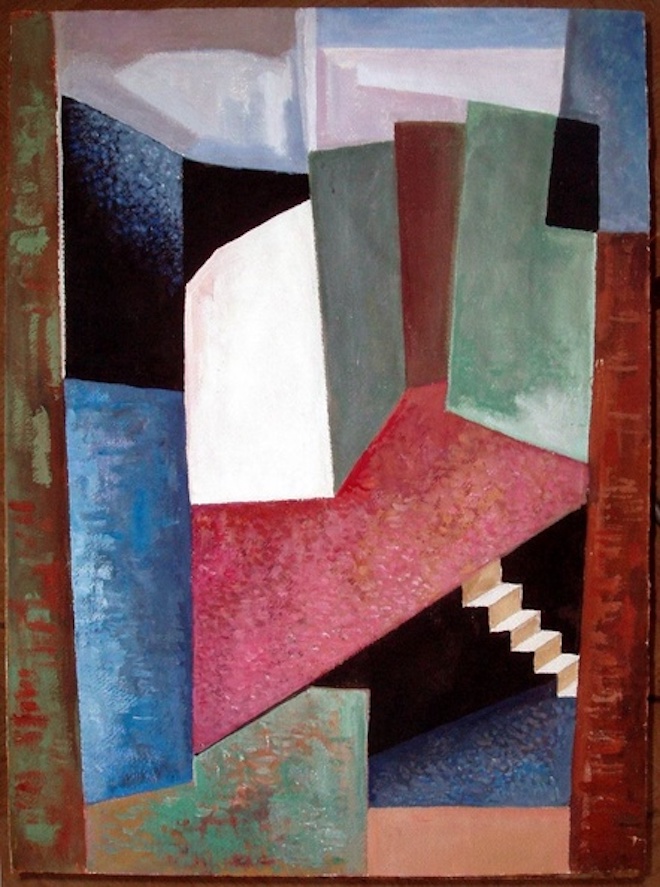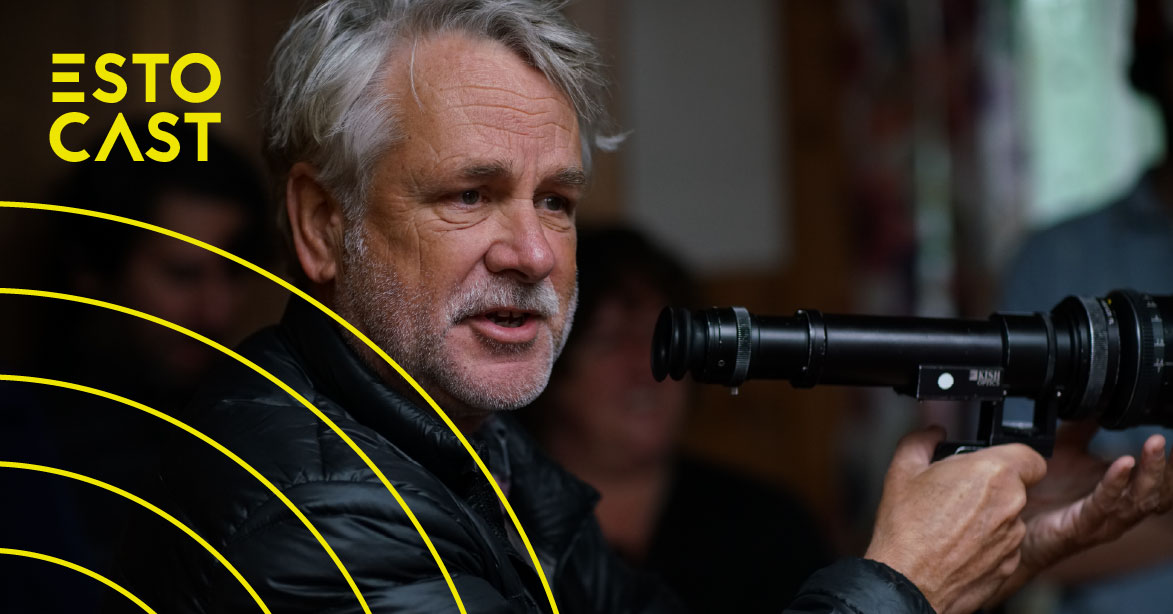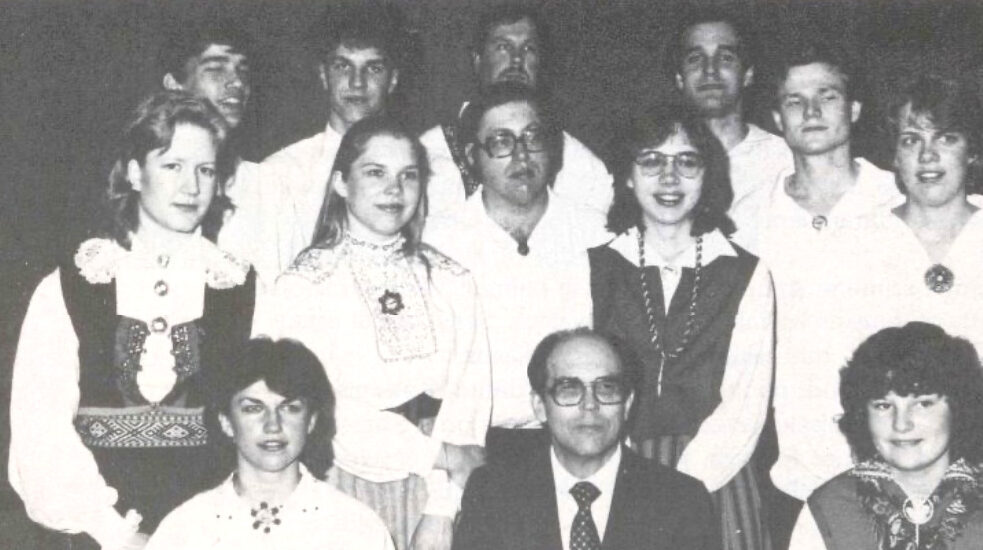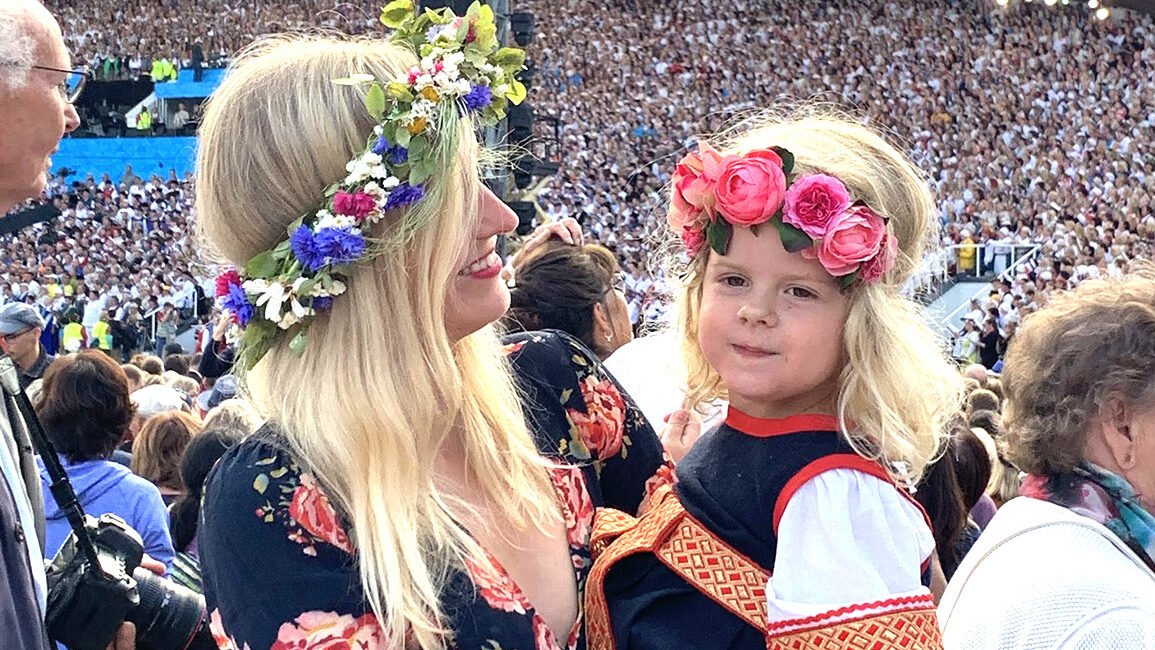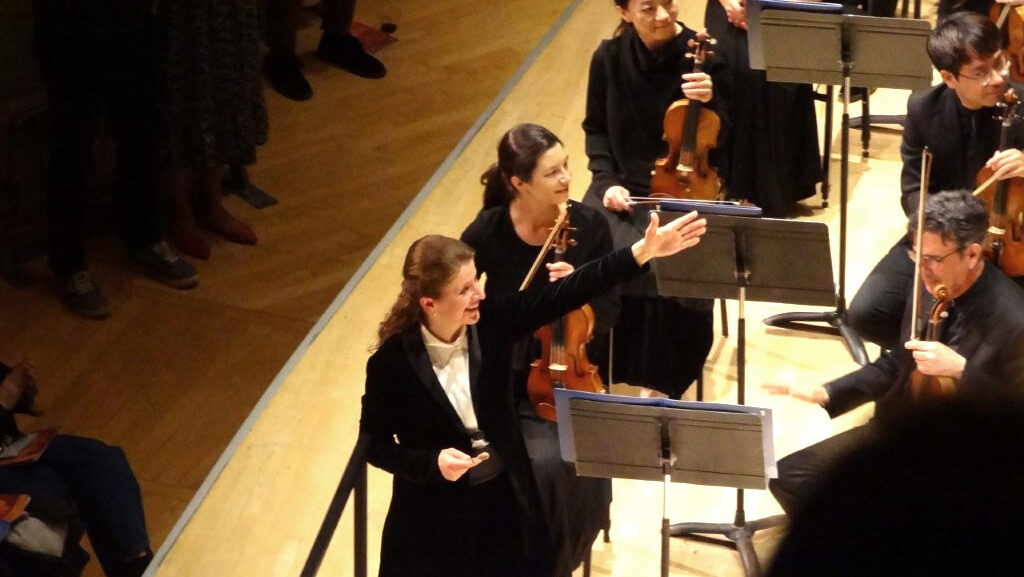Märt Laarman was born in Viljandi County in 1896. From age 16 to 20, he studied art in Rakvere, and then at the studio school of Ants Laikmaa. Tartu's E-Kunstisalong gallery has described how he filled quite a few different roles in his lifetime: as a graphic artist for books, as a teacher of the Estonian language, and an art reviewer. He was a member of Eesti Kunstnikkude Rühma (The Estonian Artists' Group) starting in 1924, and Eesti Kunstnike Liit (The Estonian Artists' Association) from 1945.
Elva Palo, President of EKKT, notes that his works “are in many books and at KUMU Art Museum in Tallinn.” Now, there is the opportunity to virtually see the trajectory of Laarman's art.
There are a few different styles of work in the show. Some of it, like his loose guašš (gouache) portraits and geometric abstract paintings, fall outside of printmaking.
However, the materials that Laarman frequently created with were wood and linoleum, which he would cut his designs into. Ink would be applied to the surface before it was pressed to make a print. What's most appealing about printmaking is its basis in the act of reduction. You have to take something away strategically from a surface to make it appear, rather than making a mark onto a surface. It's two dimensional sculpture in that sense.
Of this exhibition, the highlights are his cubist prints.
From the Kuu (“Moon”) collection in this virtual show, there is the woodcut print “Õhtu” (“Evening”) from 1947-1948. In this image, we see a ladder to the moon. It's suspended upward effortlessly through a bank of clouds that is opening up. On the edge of a wall in the middle ground, there is a figure holding their hand up and gazing sky high, embodying the awe humans have about the moon. It invites viewers up, with the first step of the ladder illuminated in moonlight.
Then there is “Oleviste ja Niguliste”, a woodcut from 1927 of St. Olaf's and St. Nicholas' churches in Tallinn. This one is interesting as it shows these two peaks in the skyline of Estonia's capital before damage was inflicted by bombing during the Second World War. Their profiles are sliced and crested with shadows and lines that really make the spires look like they're stretching upwards.
In addition to prints, there is also a gouache painting that fits together with the cubist work. “Kompositsioon” (“Composition”), from 1974, is arranged like an elusive maze of geometric shapes. Walls and corners prevent the whole scene from being visible. At the bottom, we can see a staircase leading into an underground space.
What were cubists like Laarman trying to say with their art?
The Tate Modern presents this as an explanation of cubist aims, at least in their early 20th century heyday:
“By breaking objects and figures down into distinct areas – or planes– the artists aimed to show different viewpoints at the same time and within the same space and so suggest their three dimensional form… They wanted to show things as they really are – not just to show what they look like.”
We could see prints by Laarman in this light. However, more than they are a mix of perspectives, his prints distill something we see with our eyes into their most simplified pieces. The clutter is removed.
Laarman depicted fairly standard subject matter for a cubist practitioner. Portraits, abstraction, and a few industrial images. There's also one of cellist. Something about acoustic instruments appeals to cubists despite their roundness. However, he also ventured outside of this style, covering more detailed rural Estonian scenes of forests, swans, and crows on wooden fences. Artists aren't stuck in one stylistic format, and truly, some ideas can't be expressed unless you try out new tools and techniques.
There is a baker's dozen of sections you can access on the virtual gallery, and when you click on one of these links, look out for the play and pause buttons, which start and stop the rotation of art in that section, as though you were walking around taking them in sequentially.
You can see the virtual exhibition at mart125.laarman.ee.
Written by Vincent Teetsov, Toronto
